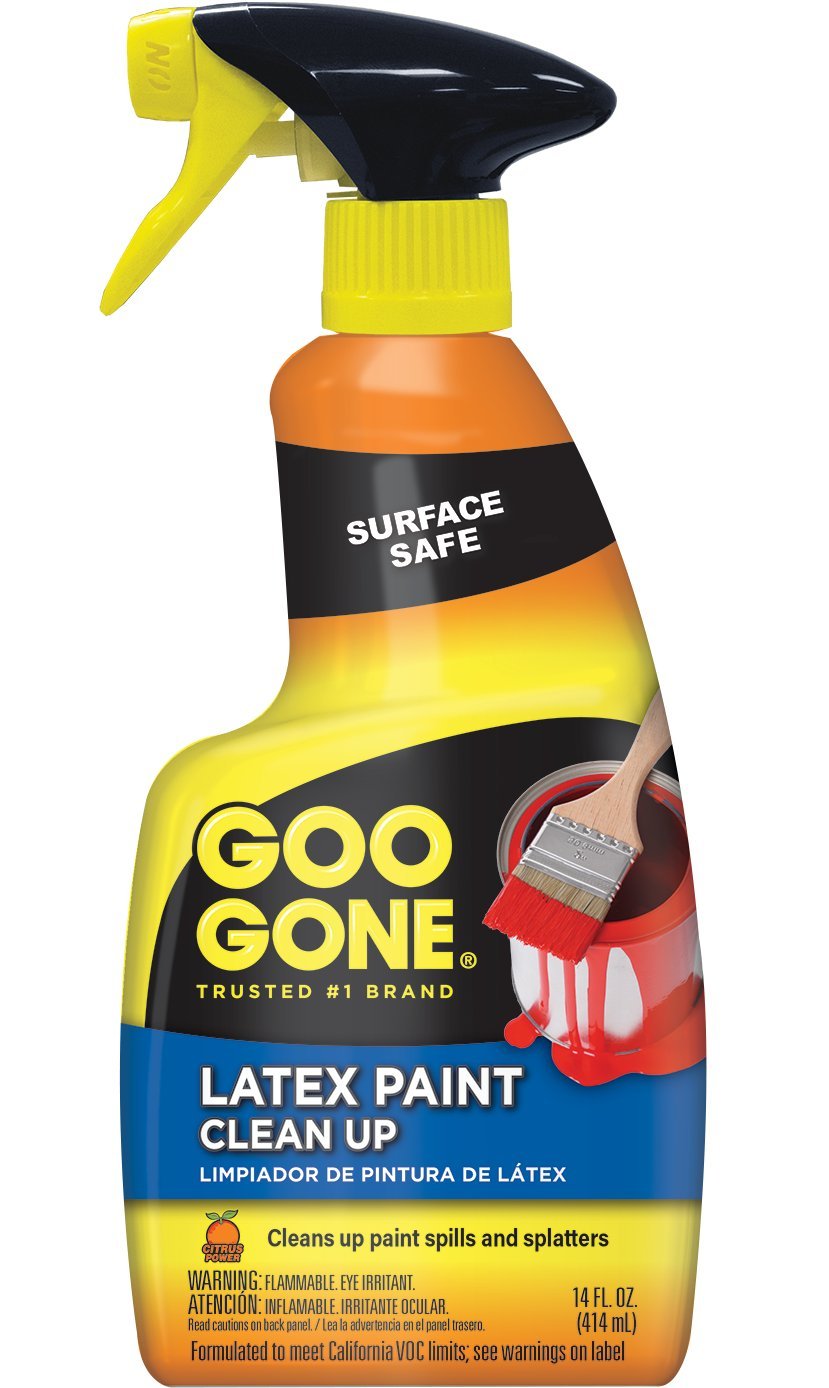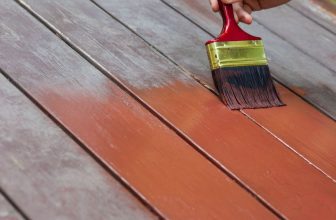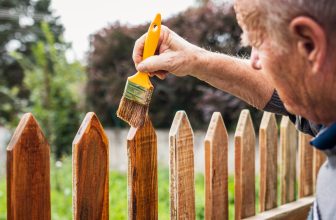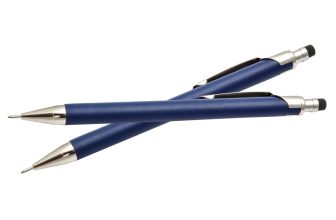Contents
As a woodworker, you know that your painted workpieces won’t look new forever. Touching up damaged or faded areas with a fresh coat of paint can help extend your project’s life, but sometimes it’s best just to remove the paint entirely and start over. Sanding will remove paint from wood, but it takes a very long time, a lot of work, and can still be challenging if you need to work in corners and other nooks.
Luckily paint stripper is another option that does all the work for you in a fraction of the time. I put together these reviews of my favorite paint strippers, as well as a buyer’s guide to help you choose the best one for your project.
Best Paint Strippers – Top Picks
BuildEazy.com may earn a commission if you purchase a product through one of our links.
Citristip offers relatively safe alternatives to the many other caustic paint strippers that contain volatile organic compounds (VOCs).
This is a zero-VOC paint stripper, meaning it doesn’t contain harmful vapors or chemicals. It doesn’t use methylene chloride or N-methyl-2-pyrrolidone (NMP), which are popular constituents in other no-VOC formulas. Instead, it uses benzyl alcohol as its active ingredient and has a pleasant, citrusy scent rather than a strong chemical odor.
This stripper has a gel-like consistency, making it very easy to apply in a thick layer. I recommend using this with a cheap synthetic brush for the best results.
It can strip paint quite effectively from wood, concrete, or metal, so you can use it for a variety of projects in your workshop or around your home. I have found that it can remove several layers of paint in a single application, so it’s excellent for refinishing projects that have already seen years of touch-ups and repainting.
Check out the video below to see just how effective this paint stripper is:
It takes a very long time to work. The container recommends letting it sit on the surface for 24 hours, but I suggest waiting for three or four days for the best results. The gel can dry out after a few hours, so you’ll need to cover it with a plastic sheet to keep it moist and active. Once it’s dry, the paint scrapes right off with minimal effort.
Despite containing no VOCs, I still strongly recommend wearing a respirator, as it can cause lung irritation. You’ll also need gloves and protective glasses when using this product, as it can cause burns.
It comes in a 1-quart container and is very affordable, especially given the surface area each bottle can cover.
Dumond Chemicals, Inc. 3301 Smart Strip Advanced Paint Remover
Dumond Chemicals makes a variety of products for removing paint, polyurethane, and other finishes.
This is a zero-VOC stripper. According to the product guide, it’s safe for you as well as the environment, and it’s 100% biodegradable. It has a very minimal odor, so it won’t make your work area smell like harmful chemicals.
It has a paste-like consistency, making it a breeze to apply to your surface. I recommend against using a brush, as the layer it leaves behind is too thin to be useful. For the best results, use a putty knife to lay down a thick layer.
This product does an excellent job of removing multiple coats of paint from wood, metal, concrete, and even plastic, so it’s very versatile.
The recommended dwell time is around 24 hours, but I found that I got better results when I waited 48 hours. It’s formulated to remain wet and active for the dwell time duration, but it worked much more quickly when I placed a plastic sheet over it to keep it moist.
After it finishes loosening the paint, stripping it off is effortless. It has a higher pH than some other no-VOC products, so you will likely need to neutralize the surface before you refinish it. This adds to your work time a bit.
Although this stripper contains no VOCs or harsh chemicals, I still strongly recommend you wear full protection when using it, including a face mask, gloves, glasses, and clothes that cover your skin. I didn’t have any problems with skin irritation, but it’s certainly possible.
It comes in a 1-gallon bucket and is reasonably affordable. However, it’s more expensive in the long run, as you’ll need to glob it onto your surface for the best results.
Sunnyside 658G1A Ready-Strip ADVANCED Paint & Varnish Remover
Sunnyside Corporation manufactures a wide variety of surface treatments, including paint removers, rust reducers, and cleaners.
This is a low-VOC paint stripper that is safer than most products. However, it does utilize some potentially harmful chemicals that produce an unpleasant odor. I recommend using this outdoors or in a well-ventilated area.
This stripper has a thin paste-like texture, making it very straightforward to apply. I suggest using a putty knife rather than a brush for a good application, as a thicker layer will remove more paint from your surface.
It can take off several layers of paint in a single-use, making it an excellent option for projects that have been touched up or repainted numerous times already. It’s suitable for use on wood, concrete, metal, and many other surfaces, so you’ll be able to use it on a variety of projects or surfaces around your house.
It begins loosening the paint in about an hour, but it takes around six to eight hours to soak in and remove the paint underneath. I suggest waiting longer if you’re looking to strip multiple layers to allow for better penetration, or you can opt for the advanced formula of the product.
My favorite thing about this paint stripper is that it changes to an off-white color when the paint has been successfully removed, so you won’t have to test any areas or wonder if it’s time to begin scraping.
This product does contain VOCs and can easily irritate your skin, so you will need adequate protective gear when using it. A respirator is required, and I also recommend gloves and eye protection.
This paint stripper comes in a 1-gallon tub, and it is very affordable. However, it can only cover about 50 square feet, given how liberally you need to apply it for good results.
Goo Gone Latex Paint Cleaner, Surface Safe Clean Up Spray For Wet or Dry Paint
Goo Gone specializes in a variety of stripping applications, including adhesive solvents, paint strippers, and general cleaners.
This is a low-VOC paint stripper that uses acetone and benzyl alcohol to loosen the paint’s bond with your work surface. It’s relatively safe, but it does contain potentially harmful chemicals and has a somewhat potent odor. I recommend using this outdoors or in a well-ventilated area.
This stripper comes in a very convenient spray bottle, making the application process effortless. The liquid has a gel-like consistency, so you can move it around to the affected areas for more even coverage if desired. I did find that lightly going over the spray with a brush produced the best results.
It’s very useful for removing single, new layers of paint. It’s not my favorite option for larger workpieces, but it’s an ideal spot treatment for cleaning up paint drips, mistakes, and spills. New paint will come right off, and older paint of multiple layers will require some effort to get it to penetrate through them.
This paint stripper works exceptionally fast, and you’ll only need to wait for about 10 minutes before scraping or wiping the surface free of paint.
It contains VOCs and also uses chemicals that can irritate your skin. I strongly recommend wearing safety goggles and gloves when using this stripper. A respirator is a necessity, and I suggest using it only in work areas with adequate ventilation.
It comes in a 14-ounce spray bottle, and it’s very expensive. However, the convenience of application makes it worth the price, in my opinion.
Paint Stripper (Gallon – 128oz) Super Remover New Generation
D Super Remover offers various products for removing adhesives, paint, and other surface treatments that are challenging to remove.
According to the product datasheet, this paint stripper uses a combination of methyl acetate, 1,3-dioxolane, and dimethyl sulfoxide to remove paint. It doesn’t have any methylene chloride or NMP, making it safer than some strippers. However, it contains volatile organic compounds (VOC), so it’s not as secure as no-VOC or low-VOC options. It has a very powerful odor.
It has a gel-like consistency that makes spreading it over your work surface a breeze. It’s viscous enough to adhere to vertical surfaces, so you can use it more easily on multiple sides of a project without waiting for each to be stripped of paint.
I suggest applying this product with a brush and letting it sit for about 15 minutes. After that time, you can use a paint stripper and a wire brush to remove all excess paint. I found that it was significantly more challenging to scrape off once dry, so I don’t suggest waiting beyond the 15-minute mark. For a detailed look at how to use this paint stripper, check out this video:
It’s massively effective at removing paint, and I found that even with a thin layer of the paint stripper, I was able to remove multiple layers of paint. I got the best results on wood, but it works on concrete, metal, and many other materials as well.
You will need adequate protective gear to remain safe while using this product, as it contains VOCs. I suggest a respirator, gloves, protective glasses, and clothing that covers your skin.
This comes in 1-gallon cans, and it’s reasonably priced. It has excellent coverage, so the effective price is much lower than many other paint strippers.
MAX Strip Paint & Varnish Stripper
Max Strip produces several paint and varnish strippers that are safe to use and can treat many types of surfaces.
This is a no-VOC paint stripper, so it doesn’t contain methylene chloride, NMP, or any other harmful chemicals. It has an odor, but it doesn’t smell of strong chemicals and instead is a fragrancy smell.
This stripper has the consistency of a water-based polyurethane, so it’s relatively thin and won’t be useful on vertical surfaces. However, it’s very straightforward to apply with a brush.
This is the least effective paint stripper I tested, which I expected because of the lack of VOCs or harsh chemicals. However, it produced surprisingly positive results, and it will remove several layers of paint if you’re willing to put some time and energy into scraping.
You can use this on many different mediums, including wood, metal, concrete, cloth, and carpet.
It takes a few hours to set in and begin removing the paint, so you’ll do quite a bit of waiting around while it works. It can dry out fairly quickly, so I suggest covering your treated surface with plastic to ensure it continues to work.
The best part about this paint stripper is that no protective gear is required. You don’t need ventilation or a respirator, and it won’t irritate your skin. I do still recommend a face mask, eye protection, and gloves just to be safe.
This stripper comes in a 1-quart bottle and is very affordable. However, the coverage isn’t great, and you may end up using it two or three times on a surface for the best results. As such, it’s effectively more expensive than many other options.
Buyer’s Guide
Keeping the below factors in mind when choosing a paint stripper will help you select the best one for your needs.
Types of Paint Strippers
There are four primary types of paint strippers available.
Solvent
Solvent-based paint strippers use chemicals that destroy the bonds between paint and the surface underneath. They often contain methylene chloride, which can cause brain damage and issues with your reproductive system if inhaled.
Solvent strippers are potentially very harmful, but they’re typically the most effective. They work rapidly and can often remove many layers in a single application. They will also strip other products, including epoxy, polyurethane, and adhesives.
They don’t have a high pH, so no neutralization is required after stripping the paint.
Caustic
Caustic paint strippers use a metal hydroxide (typically sodium hydroxide) to separate the paint layer from your workpiece. They contain harmful chemicals that shouldn’t be inhaled or touched.
They’re typically very effective for stripping paint from wood, concrete, and other porous surfaces in a short amount of time. They are ineffective for adhesives and polyurethane.
Caustic paint strippers have a high pH, so you will need to neutralize your work after stripping the paint. This can be done with water and vinegar.
Biochemical
Biochemical paint strippers typically use N-methyl-2-pyrrolidone (NMP) to break the bonds between paint and your workpiece. NMP is unsafe to inhale and come in contact with, and the strippers typically include other potentially harmful chemicals as well.
You can use them for a variety of surfaces, including wood, concrete, and metal, but you’ll likely find that your wood projects need some sanding after treatment. However, you won’t need to neutralize the surface afterward.
Biochemical paint strippers usually take several hours to work, so your project time will be extended quite a bit.
Zero-VOC
Zero-VOC paint strippers contain no harmful chemicals, no volatile organic compounds, and usually don’t have strong odors. Some are safe to use without ventilation, but I still recommend a face mask and airflow while you work, just to be safe.
These products take significantly longer to work, sometimes up to three or four days. You’ll need to cover the treated surface with plastic to maintain moisture. Even with proper preparation, they’re generally a bit less effective than more harmful options.
Many zero-VOC paint strippers can handle wood, metal, concrete, cloth, carpet, and other surfaces.
Tips for Working with Any Type of Paint Stripper
Below are some tips for making your paint stripper project safer and more effective.
Safety
I strongly recommend wearing a respirator, gloves, eye protection, and clothing covering all exposed skin when using any stripper containing VOCs or harmful chemicals. A face mask, gloves, and eye protection are best when using zero-VOC strippers as well, just to be safe.
Adequate ventilation will make the air in your workspace safer and will help keep odors to a minimum. Use fans and open windows, or use the products outside for the safest application.
Application
The application process will depend on the paint stripper you purchase. Brushes are best for thinner strippers, while a putty knife can be useful for spreading a thick layer of a more viscous paint stripper. Follow the manufacturer’s recommendation for how thick your layer should be, and cover with plastic or adhesive paper if required.
Wait the recommended amount of time before testing to see if the surface is ready for scraping. Test a small area for ease of removal. If the paint doesn’t scrape off easily, wait a bit longer and test again.
How to Strip Paint from Wood
Once you’ve determined that the bonds between the paint and your work surface are broken, use a paint scraper with some downward force to scrape the paint and stripper off of your project. It’s best to go in the direction of the wood grain for adequate removal.
Some areas may require extra pressure on the scraper, and very challenging sections may need a second application of paint stripper after the surface is cleaned.
Check out the video below for instructions on how to scrape paint off effectively:
How to Clean the Surface
If your paint stripper requires neutralization due to a high pH, wash the scraped surface with a mixture of warm water and white vinegar. If no neutralization is needed, clean the surface with mineral spirits to remove any excess paint or stripper.
You may find that small bits of paint remain on the surface after scraping. I recommend using a wire brush or a coarse scouring pad to remove anything left over after the stripper is removed.
Once your project is cleaned and neutralized, you can sand to get a smooth surface on your piece before refinishing with paint, stain, or other product.
How to Dispose of Paint Stripper
Whether you use a zero-VOC stripper or a solvent-based product that contains a variety of harmful chemicals, you should place all of the paint stripper you scrape off of your surface into a sealable plastic bag. It’s best to take the bag to a site dedicated to hazardous waste for safe disposal.
Frequently Asked Questions
Can You Rinse Paint Stripper Down The Drain?
Getting rid of paint thinner can be a confusing task, and it’s hard to know how to properly dispose of it.
First, you can’t rinse paint thinner down the drain as it is extremely dangerous and harmful for several reasons. It is classified as a hazardous substance, meaning that there are specific disposal guidelines you need to follow.
If you pour paint thinner down the drain, the chemicals will damage the environment and contaminate the water in your drains. It can also react with the metal pipes, as well as other chemicals and substances in the drain water to produce a chemical reaction.
On top of that, paint stripper has an extremely low ignition temperature, with a flash point between 70-140 ℉. This means that if it gets too hot or is exposed to any sparks (a distinct possibility and result of many reactions) it can ignite and cause lots of damage.
Don’t pour paint thinner down any drain, and only dispose of it in the proper manner.
What Can I Do With Leftover Paint Thinner?
Because paint thinner is considered a hazardous material, you need to take it to an appropriate disposal facility to get rid of it. You can find your local hazardous waste disposal facility online. From there, simply deliver it or arrange a drop-off to get it properly disposed of.
Alternatively, you can throw it away as regular household waste, as long as you take some precautions first.
If you only have a small amount of paint thinner left, you can wait for it to dry up and harden. To do this, leave it with the lid off somewhere with good ventilation and that you don’t go in often.
Because of the dangerous fumes that paint thinner gives off, you should avoid doing this anywhere you’ll be for more than a minute or so at a time.
When the paint thinner is hard and dry, you can prepare to throw it out. Seal the container if it is in one, and wrap this in newspaper until it is completely covered several layers deep. You can now throw it away with your household waste.
However, you’re always going to be better off disposing of it at the appropriate disposal facility.
How Do You Remove Paint Stripper Sludge?
Old and used paint stripper will thicken into a gross, unusable sludge. This can be tricky to get rid of, and you need to do it properly to avoid any unwanted chemical reactions or issues arising from improper disposal.
If the paint stripper in your container has thickened up and turned to sludge, it’s relatively easy to get rid of. Because it’s already confined to the paint stripper container, you can just dispose of the whole thing.
Don’t just throw it in the garbage – there are specific things you have to do to get rid of the sludge. Just like normal paint stripper, the sludge counts as a hazardous material and you’ll need to take it to the appropriate disposal facility to have it dealt with properly.
Removing paint stripper sludge from other surfaces can be a bit trickier. If you’ve been removing paint from a surface, you’re going to be left with the dirty sludge leftover from the paint. Your best bet is to sort it out early as it will only get tougher to deal with as it dries.
Use a wide palette knife or putty knife to scrape the sludge off of any surfaces. Get as much off as possible; any remaining sludge will damage and discolor the surface it’s on, and can be dangerous if left unchecked.
Following the same disposal rules, move the sludge into a sealed container and take it to the correct disposal facility to get rid of it.
How Do You Store Paint Stripper?
Storing your paint stripper properly will help it last longer and remain effective over time. If you don’t store your paint stripper in the correct manner, it can have serious consequences for the stripper and for your own health.
Over time, improperly stored paint stripper will dry out and turn to sludge. This can’t be used, both because it’s more difficult and because it will have lost its effectiveness. Additionally, it will produce harmful fumes that can cause serious health problems if inhaled.
To store your paint stripper correctly, the first thing you need to do is make sure it’s sealed tightly. Keep it in its original container, clearly labeled, and ensure that the lid is secure and tight.
If the lid is damaged and leaves a slight gap, you can use tape to form a seal and prevent fumes from leaking out.
If the container is now unusable (due to a crack, hole, or some other form of damage), you’ll have to find a new one.
Don’t put the paint stripper in a different chemical’s bottle, even if you’ve cleaned it first. Mixing chemicals is extremely dangerous and residue can remain on a bottle even if you’ve washed it.
Make sure the container you’re transferring the paint stripper to is safe for storing chemicals. Only use glass, metal, or plastic containers that won’t react with the chemicals, and have a tightly sealed lid that will keep fumes inside.
Label the new container clearly so you know exactly what’s in it, to avoid any possible mistakes or accidents.
Keep it in a cool, dry place out of direct sunlight and away from any heat sources. A tool shed or cupboard is ideal, and keep it on a shelf so it’s out of reach of children and pets.
Conclusion
Paint stripper makes the process of removing old, stained, faded, or damaged paint from projects effortless, allowing you to refinish and rejuvenate your work. With the right paint stripper, you can take an outdated project and have it looking brand new in no time at all.
My favorite product overall is the Citristrip QCSG801 Paint & Varnish Stripping Gel. It’s safe for you and the environment, contains no VOCs, and is capable of removing multiple layers of paint in a single application.













